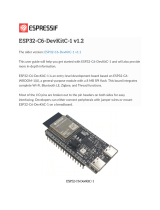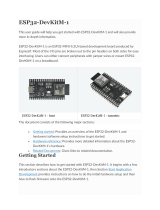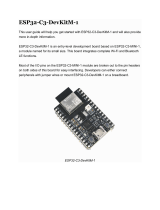2. Impact on Customer Projects
This section is intended to help our customers to understand the impact of using chip
revision v3.0 in a new design or replacing older version SoC with chip revision v3.0 in
existing design.
2.1. Use Case 1: Hardware and Software Upgrade
This is the use-case where the new project is being initiated or upgrade for hardware and
software in an existing project is a possible option. In such a case, the project can benefit
from protection against fault injection attack and can also take advantage of newer secure
boot mechanism and PSRAM cache bug fix with slightly enhanced PSRAM performance.
1. Hardware Design Changes:
Please follow the latest ESP32 Hardware Design Guidelines. For 32.768 KHz crystal
oscillator stability issue optimization, please refer to Section Crystal Oscillator for more
information.
2. Software Design Changes:
1) Select Minimum configuration to Rev3: Go to menuconfig > Conponent config >
ESP32-specific, and set the Minimum Supported ESP32 Revision option to “Rev
3”.
2) Software version: Recommend to use RSA-based secure boot from ESP-IDF v4.1
and later. ESP-IDF v3.X Release version can also work with application with original
secure boot V1.
2.2. Use Case 2: Hardware Upgrade Only
This is the use-case where customers have existing project which can allow hardware
upgrade but software needs to remain the same across hardware revisions. In this case the
project gets benefit of security to fault injection attacks, PSRAM cache bug fix and
32.768KHz crystal oscillator stability issue. The PSRAM performance continues to remain
the same though.
1. Hardware Design Changes:
Please follow latest ESP32 Hardware Design Guidelines.
2. Software Design Changes:
Client can continue to use the same software and binary for deployed product. The
same application binary will work on both chip revision v1.0 and chip revision v3.0.















